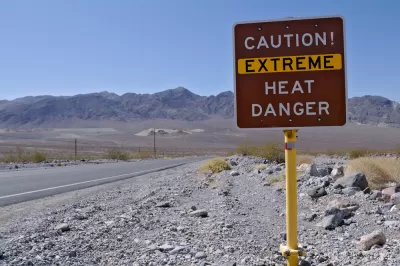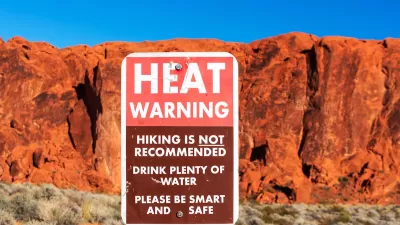A new UCLA study examines how formal and informal cooling centers are being used in Los Angeles County.

As climate change makes heat waves longer and more severe, people turn to both formal and informal cooling centers for relief in Los Angeles County. Formal cooling centers are typically offered at libraries, parks, and other public facilities. Informal ones are places like shopping centers, coffee shops, and other indoor spaces with AC. As reported in this article by David Colgan, a new UCLA study published online in the journal Applied Geography uses smartphone data to examine for the first time how formal and informal cooling centers are being used in L.A. County.
The study reveals that:
- About 20 percent of the population uses cooling centers in the county.
- The vast majority of those who visit cooling centers use shopping malls and other informal cooling centers; far fewer visit official cooling centers.
- When temperatures reach or exceed 95 degrees, the cooling centers that see the greatest increase in visits are those located near public transit stops.
- For people without automobiles, the elderly and other disadvantaged groups, official cooling centers may be the only practical option.
To reach their findings, the researchers used smartphone data that was anonymized and aggregated, which eliminates the possibility of revealing any specific locations for a particular smartphone. The data were acquired from Outlogic, a private location data provider that collects data on consenting users of third-party mobile phone applications.
The study offers several recommendations for decision and policy-makers, including placing more cooling centers in underserved neighborhoods where residents are more reliant on them, placing centers close to transit stops, and making cooling centers a part of more comprehensive strategies to mitigate extreme heat exposure.
For more information, please read the source article.
FULL STORY: Beating the heat in L.A.: County’s ‘informal’ cooling centers are used more than official ones

Planetizen Federal Action Tracker
A weekly monitor of how Trump’s orders and actions are impacting planners and planning in America.

San Francisco's School District Spent $105M To Build Affordable Housing for Teachers — And That's Just the Beginning
SFUSD joins a growing list of school districts using their land holdings to address housing affordability challenges faced by their own employees.

The Tiny, Adorable $7,000 Car Turning Japan Onto EVs
The single seat Mibot charges from a regular plug as quickly as an iPad, and is about half the price of an average EV.

Seattle's Plan for Adopting Driverless Cars
Equity, safety, accessibility and affordability are front of mind as the city prepares for robotaxis and other autonomous vehicles.

As Trump Phases Out FEMA, Is It Time to Flee the Floodplains?
With less federal funding available for disaster relief efforts, the need to relocate at-risk communities is more urgent than ever.

With Protected Lanes, 460% More People Commute by Bike
For those needing more ammo, more data proving what we already knew is here.
Urban Design for Planners 1: Software Tools
This six-course series explores essential urban design concepts using open source software and equips planners with the tools they need to participate fully in the urban design process.
Planning for Universal Design
Learn the tools for implementing Universal Design in planning regulations.
Smith Gee Studio
City of Charlotte
City of Camden Redevelopment Agency
City of Astoria
Transportation Research & Education Center (TREC) at Portland State University
US High Speed Rail Association
City of Camden Redevelopment Agency
Municipality of Princeton (NJ)





























